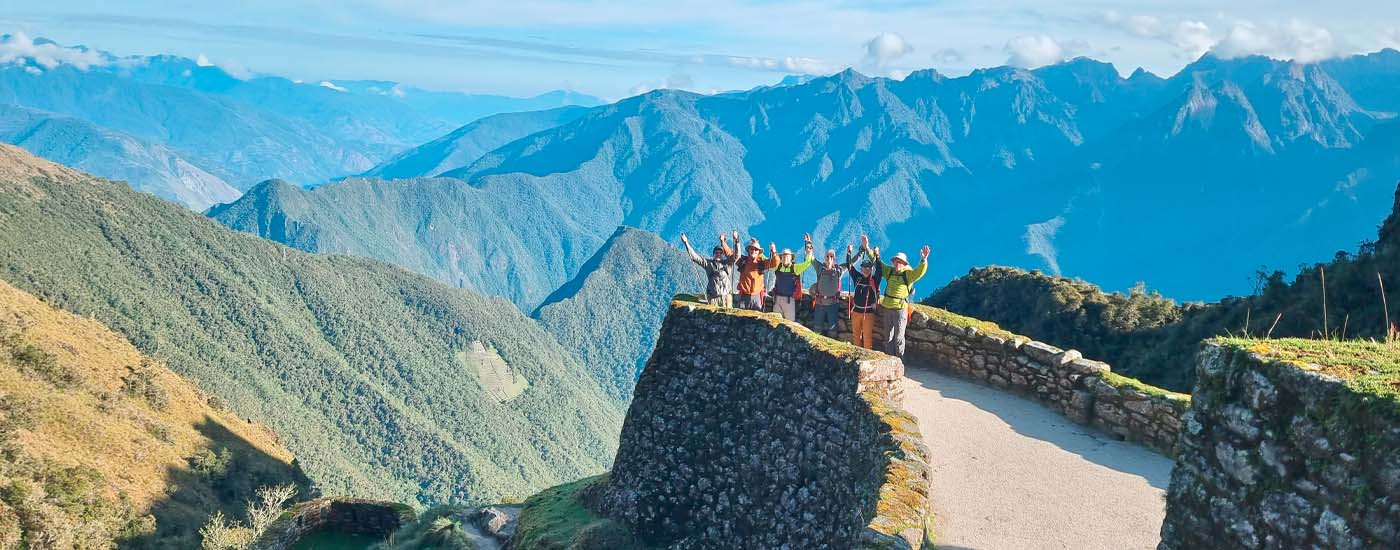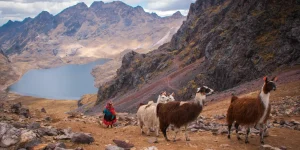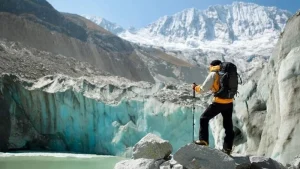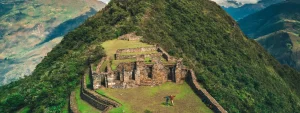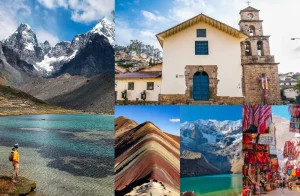As you may expect the Inca Trail to Machu Picchu is one of the great challenges that you may partake in your traveling life. The trek is walking to high Andean Passes, Superior Mountain ranges and ineffable cloud forests where you will feel you are in another world and seeing hundreds of different types of flora. Following the path of the Inca, it all cumulates in one of the most mystical places that you will visit, Machu Picchu.
Climate & Weather
The path that the Inca Trail follows has 2 seasons, the rainy season and the dry season and gradual weather and temperature changes in between. As Machu Picchu is in the middle of the Andes mountains the temperate can change rapidly, can be cold and also can be warm, as you are trekking you can also get hot.
1.- Dry Season
June, July, and August mark the height of the dry season in the Andean region of Peru. During these months, warm sunny days are normal. Daytime temperatures usually range from 68 to 73°F (20 to 23°C), but night temperatures drop to a chilly 30 to 45°F (-1 to 7°C) at high altitude campsites.
2.- Wet Season
November to March is the wet season in Cusco. Daytime temperatures average between 68 to 70°F (20 to 21°C). Nights are warmer compared to the dry season with an average temperature of about 45°F (7°C). Don’t panic there will be some sunshine.
Best time to Trek the Inca Trail
It is said that the best time to hike the Inca Trail is during the dry season, from May-October. This provides mostly dry and sunny weather, with nice crisp air in the mountains. Keep in mind, though, that this would be the busiest time to do the trail and expect to see many people doing the trek. Also, this is the coldest time with the nights getting really cold.
On the other hand, if you don’t mind some more mixed weather, the shoulder months of April and November offer fewer crowds with still some beautiful days with perhaps a few more rain showers here and there (which can prove quite refreshing while hiking). The months of December and January are the wettest and expect to get wet, so take good wet weather gear and you will be fine, the trail is quiet in these months so you can spend more time at the ruins.
Remember that the Inca Trail is closed in February for Maintenance and you will not be able to the trek.
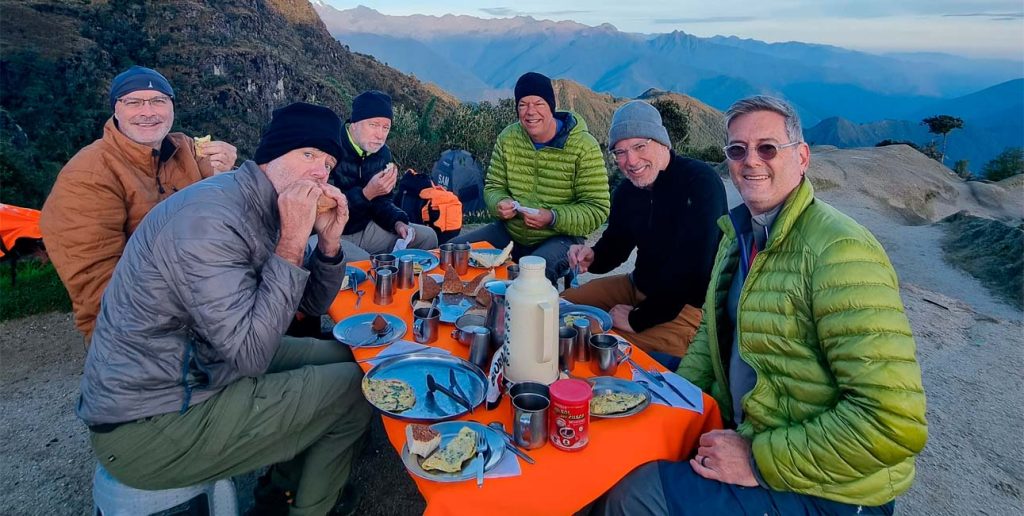
Highlights of the Classic 4 days Inca Trail to Machu Picchu
Nature
The Inca Trail, passes through several different landscapes, from high-altitude Andean peaks to lush cloud-forest and jungle. Unique ecosystems prosper in each of these environments. You may spot various Andean hummingbirds, among hundreds of species of orchids and exquisite flowers and a feeling that you are alone with Mother Nature in the gigantic mountains.
Dead Woman’s Pass
Climb out of the Sacred Valley towards Warmiwanusca, or Dead Woman’s Pass, on the second day of the classic Inca Trail. This is the highest point of the trek at 4,215 m (3,828 ft) and the views from the summit are unforgettable.
Runkurakay
Runkurakay are ancient Inca lodges of unique circular structures and precise stone masonry have withstood many centuries in the high Andes. Your guide will explain the history of this ancient site.
Patallacta
At the head of the Kusichaca and Willkanuta rivers, the terraces of Patallacta were likely used for crop production, or resting places for travelers, it is said that the site accommodated people on pilgrimage to Machu Picchu during Incan times. Only accessible from a narrow stone staircase.
Wiñayhuayna
Winayhuayna is the last campsite of the trek. This spectacular ruin situated on the side of a mountain has some of the most breathtaking views of the valley and the soaring peaks, the archaeological complex itself is extensive and steeply terraced. Wiñayhuayna means has an abundance of orchids dotting the landscape.
Sun Gate
The incredibly rewarding multi-day trek builds up to the Machu Picchu arrival on the last day. Walk through Inti Punku, or the Sun Gate, into the lost city of the Incas at sunrise. The view from the Sun Gate on a clear day is nothing short of wonderful.
Machu Picchu
Your guided tour of Machu Picchu will start when you reach the gate after you have descended from the Sun Gate, in this 2-hour tour you will learn the history, traditions and about the life of the Inca people of Machu Picchu. Explore the different parts of the city and after have free time to discover Machu Picchu by yourself. Take plenty of photos from the many vantage points.
Classic Itinerary for the Inca Trail

4-day Inca Trail Inca Trail.
Day 1: Cusco – Ollantaytambo – Wayllabamba
Pick up early and travel to Ollantaytambo for the start of the trek, continue to the town of Miskay, trek to Patallacta the first archaeological site. After lunch trek to the first campsite of Wayllabamba, with views of the Vilnacota Ridge and Mt Veronica.
- Hike Distance: 12 km (7.5 mi)
- Hike Time: 4 to 6 hrs
- Maximum Altitude: 3,000 m (9,842 ft)
- Gradient: Moderate
Day 2: Inca Trail – Wayllabamba to Pacaymayo
The most challenging day of the trek, hike up to Dead Woman’s Pass, which is at a height of 4215 meters, from here the views are spectacular. After which we descend and climb another pass before continuing on to the campsite for a well-deserved rest after a hard day of hiking.
- Hike Distance: 16 km (10 mi)
- Hike Time: 7 to 8 hrs.
- Maximum Altitude: 4,215 m (13,828 ft)
- Gradient: Challenging
Day 3: Inca Trail – Pacaymayo to Wiñayhuayna
Today continue trekking on a path of what seems like endless Inca stone stairs downwards. Tour the ruins of Runkurakay and Incatambo with the view of the Valley of Pacaymayo. The day ends when we arrive at the ruins of Winay Wayna where we will camp for the night.
- Hike Distance: 16 km (10 mi)
- Hike Time: 8 to 10 hrs.
- Maximum Altitude: 3,900 m (12,467 ft)
- Gradient: Moderate
Day 4: Wiñayhuayna – Machu Picchu
Rise early today and trek the final leg to the Sun Gate, from here you get an unbeatable view of Machu Picchu. From here walk down to the entrance of Machu Picchu. Your guide will give you a 2 hours guided tour and some free time. Later take the bus to Aguas Calientes and the train back to Cusco.
- Hike Distance to Machu Picchu: 6 km (3.7 mi)
- Hike Time: 3 to 5 hrs
- Maximum Altitude: 2,650 m (8,694 ft)
- Circuit in Machu Picchu: Number 3.
- Gradient: Moderate
Note: There is a 2-day Inca Trail option. The 2-day Inca Trail is perfect for travelers who don’t have the time or may want a trek that is less physically demanding than the classic 4-day Inca Trail itinerary. It is also a great option if 4-Day Permits have sold out.
The 2-day Inca Trail hiking package includes a day of hiking surrounded by the beauty of the Andes, walk past Chachabamba, an archaeological complex believed to have served as a guardhouse to Machu Picchu, and past Wiñay Wayna. Enter the Sun Gate for a first encounter with the “Lost City of the Incas.” Spend the night at a comfortable hotel in Aguas Calientes and then wake up the next day for a guided tour of Machu Picchu.
Permits
You may think that 500 permits are a lot of permits for the Inca Trail every day. But when you consider this is for the people who do the 4-day Inca Trail, the 2-day Inca Trail, all the guides, porter and cooks, these permits sell out very quickly, sometimes 6 months in advance for the high season. So, when you decide when you want to do the Inca Trail make you booking.
February
For the month or February, the Peruvian government closes the trail for annual maintenance, conservation and clean-up. It’s opened every other month of the year.
Prohibited Items
Include:
- Fossil fuels such as kerosene, diesel oil, gasoline
- Firearms or compressed air weapons, bows and arrows, hunting and fishing instruments, knives, spikes, shovels, axes, machetes and other tools.
- Wildlife traps
- Stimulants, psychotropic substances, narcotics or illegal drugs that are not allowed by national legislation.
- Domestic animals or exotic species.
- Walking sticks with metal tips – must have rubber protectors.
- Plastic waste like bottles, plastic containers and disposable cups.
Prohibited Activities
Respect this historic trail by adhering to the following:
- You may not hike the Inca Trail between 7 p.m. and 5:30 a.m.
- You may not take or destroy any flora and fauna in the area.
- Do not litter
- Do not disturb the animals.
- No campfires allowed
- No damage to trees.
- No destroying the rocks of the ruins or the path.
- No camping within areas of Inca remains. Camping is only permitted in authorized areas.
Packing List for the Inca Trail to Machu Picchu

Back Pack to take with you on the trek
- Water Bottle, reusable to be filled at each meal
- Sun Hat
- Sunscreen
- Headlamp, essential
- Wool Hat
- Raincoat and Pant
- Fleece
- Snacks, like chocolate bars, cereal bars, dry fruits for the trek
- Gloves
- Camera
- Hand Sanitizer and Moisturizer
- Toilet Paper and small plastic bags for waste
Duffel Bag to be carried daily by the porters
Note not accessible until the camp at night
- 2 T-shirts minimum
- 2 Hiking Pants minimum
- 4 Sets undergarments
- 3 Set hiking socks
- Bathing Suit
- Thermal Underwear
- Fleece, Down Jacket
- Comfortable shoes for camp
- Quick Dry towel
- Small Bottle of Soap
- Battery Charger, note there is no electricity on the trail.
- Large plastic bags
Toiletries
- Face Cleanser and Moisturizer
- Hand Sanitizer
- Wet Wipes
- Toothbrush and Paste
- Medications
- Small First Aid Kit
Required Items
Here are important items that you must have, if you forget you will not be able to enter Machu Picchu.
- Documentation. Permission to enter the Inca Trail must be documented and you have to have it paid in full before entry. Only documents given by the Machu Picchu Historical Sanctuary Management Unit (UGM) are accepted.
- Passport. You need your passport to enter the trek and the ruins. Passport must match the name on your Inca Trail tickets and documentation. Tickets are 100% non-transferable.
- Reusable water bottle. Plastic is not permitted on the trail, so be sure to have a refillable water bottle to stay hydrated.
The Altitude
We recommend spending a few days in Cusco before your trek begins to give your body plenty of time to adjust to the high-altitude region. Cusco resides at (3,400 m) above sea level. The highest mountain pass along the Inca Trail is at a soaring 13,830 ft (4,214 m). When you arrive into Cusco, Drink plenty of water and avoid alcohol, eat a low-calorie diet and get plenty of rest before your trail starts. The trail requires a certain amount of fitness to complete.
Tipping for the Porters
Tipping is a personal choice if you feel that you have had good service, but never feel obligated to tip. If you do, on the last night of your trek, all the hikers put their tips together and give them to the guide. The guide will then distribute that money between all the Inca Trail personnel. We advise anything from $50 to $70 USD per hiker.
If Inca Trail Permits Are Sold Out
If permits for the Inca Trail to Machu Picchu are already sold out for your dates, fortunately, there are alternatives you can do. The Salkantay, Lares, and Choquequirao are great alternative treks –they are all ancient Inca footpaths that belong to a vast network of roads that once connected the entirety of the Inca Empire.
Hopefully this gives you insight into the Inca Trail and what to expect, to ensure your place on the Inca Trail book early!

